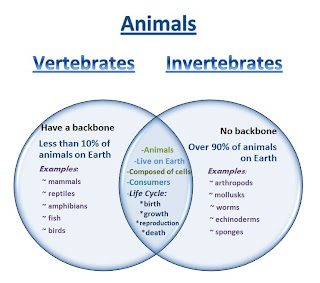Vertebrate: Some examples of vertebrates are parrots, humans, snakes etc. They are animals with a internal skeleton made of bone. They have a well developed internal skeleton, a highly developed brain, they have a advanced nervous system and they attain a outer covering of protective cellular skin. They are also classified into 5 groups: fish, amphibians, reptiles, birds, and mammals.
 |



